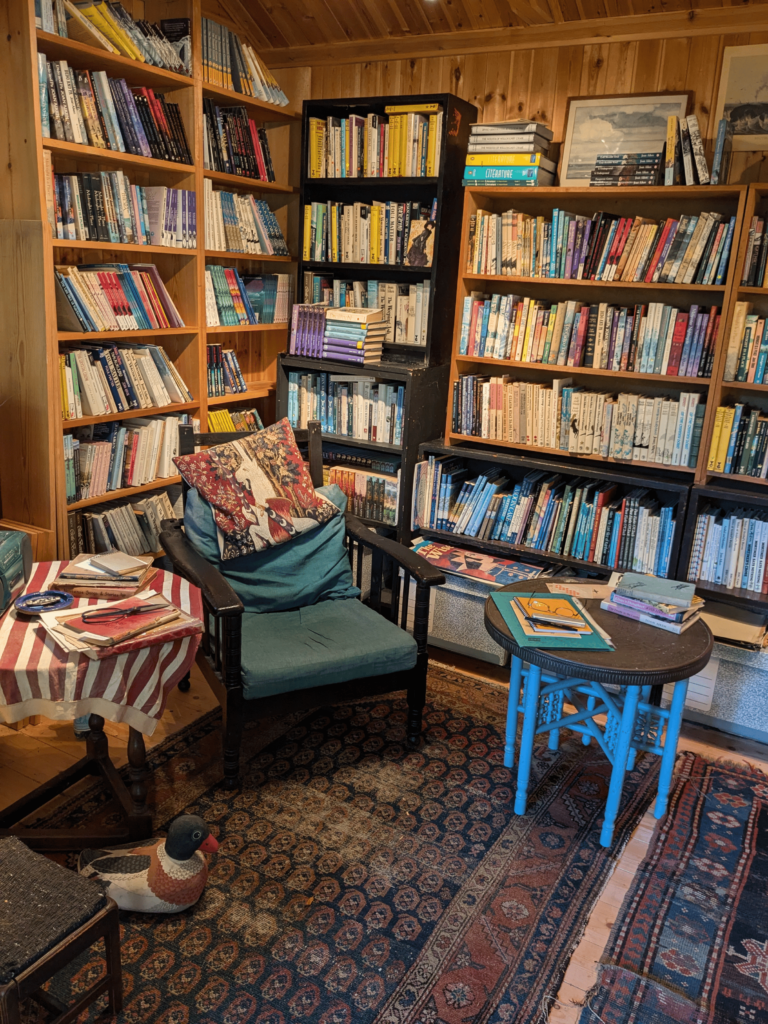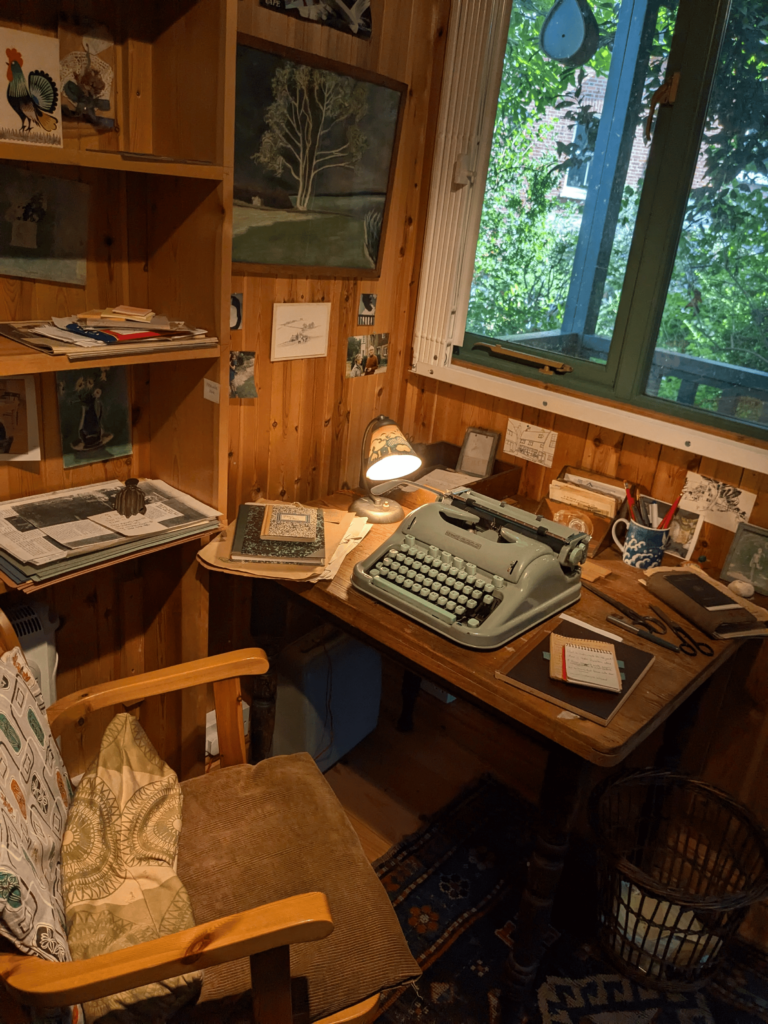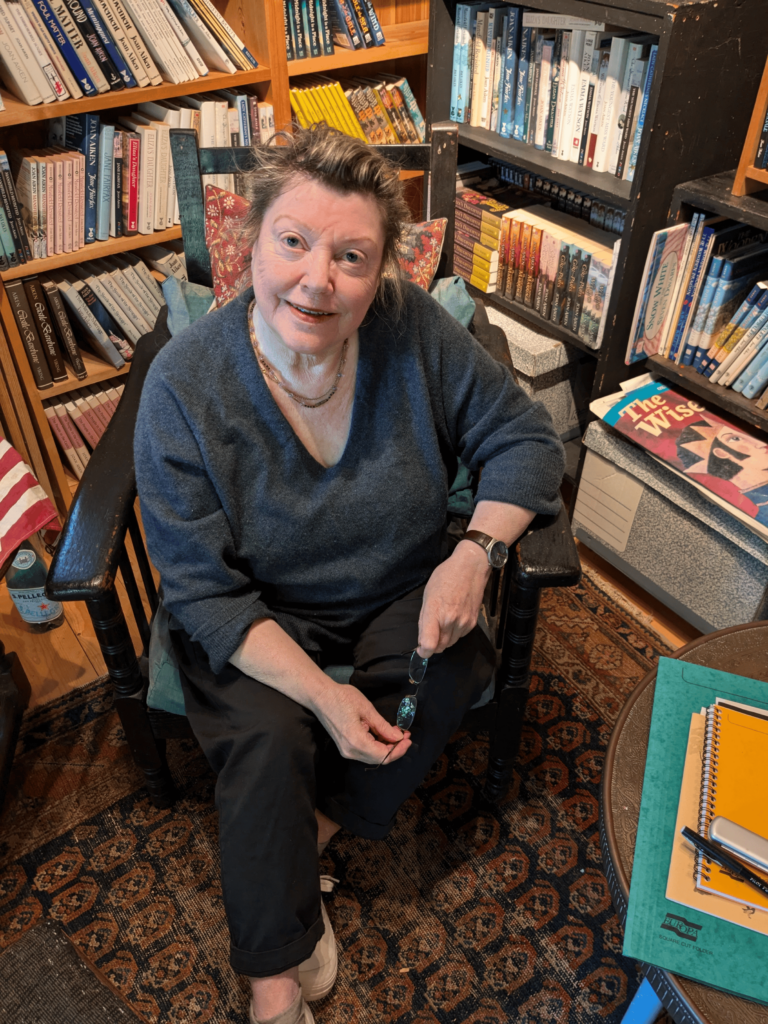The greatest piece of good fortune in my life was to be born the daughter of the writer Joan Aiken. As a child I took it for granted that there would always be another story to cheer me along on a rainy walk, or an imaginative solution to a thorny problem, or a wonderful companion to share (and sometimes steal!) my own stories and adventures, and finally someone who would give me the best job in the world, for life.
Article continues after advertisement
Writing had been the family trade for more than three generations, from Unitarian minister William James Potter down to Joan’s father, poet Conrad Aiken, but I never thought it would be mine. I was a reader, a listener and had my own ideas about telling stories; I went off to train as a mime in Amsterdam and Paris, perhaps the equivalent of running away to join the circus, and spent many years working in theatre and travelling between International Drama Festivals, where language was not a barrier.
Through all this time I have come to realize the real and lasting value of some of the classic books I have been given to look after.
But my mother’s world caught up with me in the end, as one day she warned me:
“Someone will have to look after the books when I go, and you know it has to be you!”
My mother attempted to prepare me, and gave me a tour of her study at the top of her old house in Sussex—”Don’t call it the attic!” she used to say furiously…With her help I had drawn up a map of where everything was filed, although much of it was in parcels and boxes, old suitcases under the eaves, and stacks of manuscripts jammed in between the rafters—the accumulation of fifty years and then a fairly recent house move. When the house was sold and I had to bring all the paperwork—along with multiple copies of her more than one hundred books published in seemingly every possible language—up to my home in London, I realized I would have to build a new room for it all—my Joan Aiken shed.
Copyright © Estate of Joan Aiken.
Looking after a Literary Estate seems like a dream job, especially if you are a reading addict. The danger is that you may never leave your room again, or in my case, the shed…a lovely secluded tree-surrounded refuge at the end of my garden, and in these strange times, what could be better?
But even though publishing had been my family trade for so long, I struggled to grasp the scale of the job. How do you value a literary estate? It turns out to be a mathematical formula, nothing to do with the content or success of the work. The question was really how many books had she published, and where were they all?—in other words, with which publishers and in how many countries?
Having emptied all of the trunks and chests of drawers, I spread the contracts out all over the floor and gradually got them into order (probably messing up a perfectly reasonable system developed over her own lifetime). Then I got everything onto a spreadsheet (with the help of a teenage child of course) and then—truly miraculous—on to a complete (I hope!) online Bibliography and a website—The Wonderful World of Joan Aiken. This is what I like to imagine as a virtual museum for her life and work.
 Copyright © Estate of Joan Aiken.
Copyright © Estate of Joan Aiken.
My greatest supporter and guide, my absolute hero, until only a couple of years ago was Joan’s long time US agent, Charles Schlessiger at Brandt & Hochman in New York. I first met him when I was aged ten on my first trip over to America to meet another of his clients—Joan’s father, my Grandfather, the poet Conrad Aiken. Charles, who only retired at the age of eighty-one, introduced me to the publishing world, and patiently educated me with all his delightful grace and charm. He is the only other person I know who has actually read everything Joan Aiken ever wrote, and these days I see what a rare qualification that was; together we lived through many of the changes in technology which radically altered the profession for writers and publishers today. Now the internet makes the writer’s life less isolated, and more convenient, although my mother stuck to her old typewriter—her most beautiful one appears on the website homepage, apparently the same model was used by Sylvia Plath—and letters were always faithfully exchanged by post.
Her stories, modern fairy tales for the young of all ages, as her father proudly called them, will live on forever.
Over the last fifty years, fashions, particularly in children’s literature, have come and gone, but through all this time I have come to realize the real and lasting value of some of the classic books I have been given to look after. Some, like The Wolves of Willoughby Chase, have remained in print ever since their first publication, now seventy years ago. Dido Twite, Joan’s enduring heroine, and acknowledged alter ego, has become a model for many fictional heroines to follow. And her stories, modern fairy tales for the young of all ages, as her father proudly called them, will live on forever.
 Copyright © Estate of Joan Aiken.
Copyright © Estate of Joan Aiken.
Keeping all of Joan Aiken’s work in print is probably an impossible task—there is so much new writing coming out which will be the classic material of the future—but my best help comes from the people Joan herself knew. Her readers. My heart is gladdened by the letters and reviews of her stories that regularly turn up on book sites saying things like:
“A long, long time ago I read a magical book about a lost slice of rainbow…and now that I have found it again (and passed it on to my eight year old!) I can die happy…”
or:
“The creativity is awe-inspiring, the writing beautiful and the stories exhilarating. I only wish I’d joined Dido on her adventures when I was 10 instead of only discovering them at nearly 40!”
These are the people who keep me going—the ones who love to sit down with a favorite Joan Aiken story, or pick one up from their shelves again as old friends—because they are the ones who are really looking after the books, and the ones who will keep her alive forever.
 Copyright © Estate of Joan Aiken.
Copyright © Estate of Joan Aiken.
________________________________
Born in 1924, Joan Aiken died at the beginning of 2004, the year when she would have been eighty, and this year has been the centenary of her birth. Her over 100 books are celebrated on her website, The Wonderful World of Joan Aiken. Essay copyright © by Elizabeth Delano Charlaff. All rights reserved. Featured image: Copyright © Estate of Joan Aiken.
